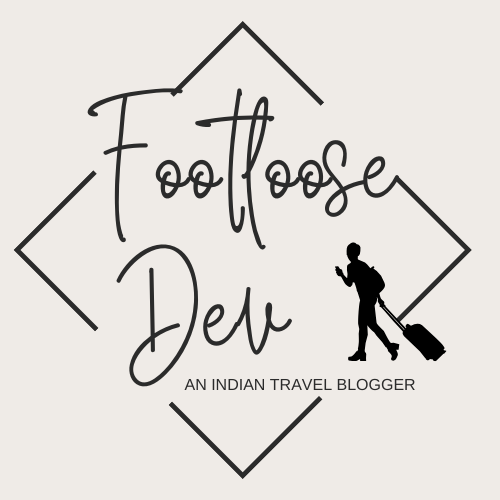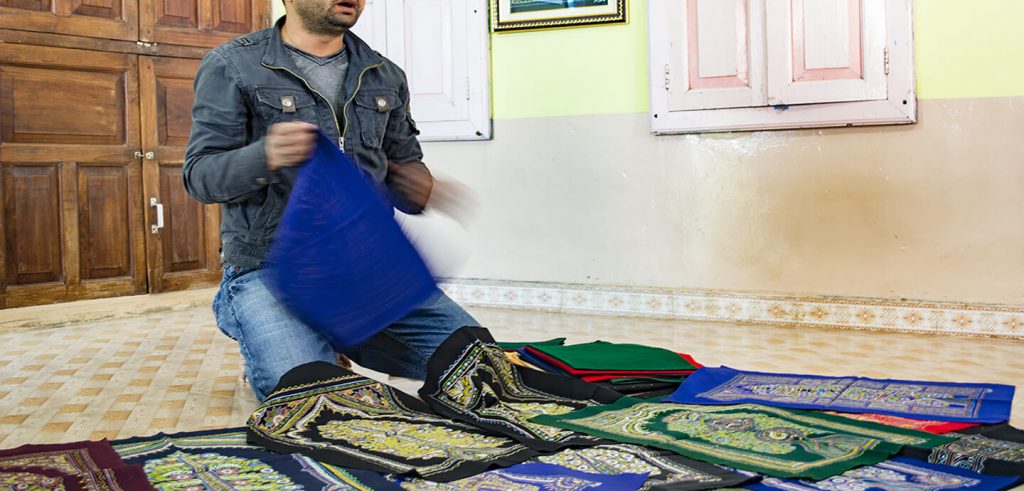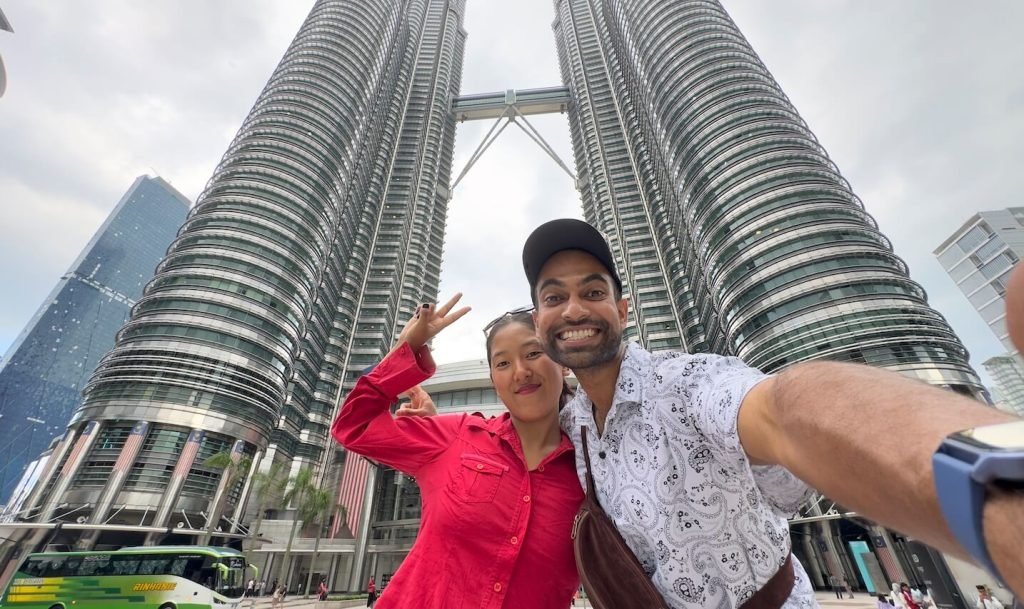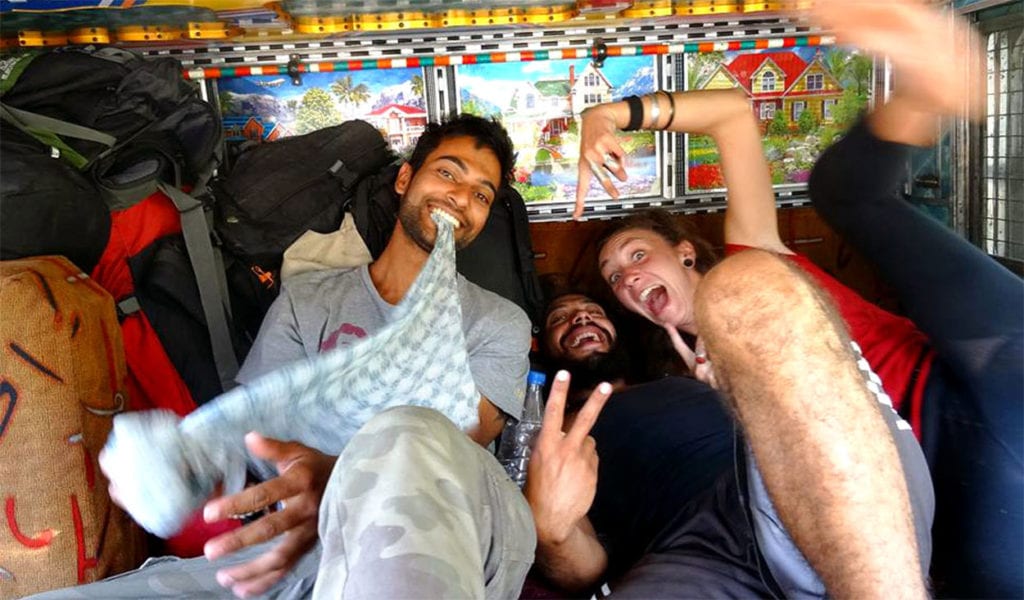Other than the popular Nirona Art and Copper Bell of Nirona Village, Kutch has always been known for its wealth of culture, handicrafts, and art forms. The region produces some of the world’s most unique textile products, as well as intricately crafted metalworks.
In the book, Kachchh: The Last Frontier, author Tejinder Singh sums it up well: “The intricate embroidery stems from the Kutchi lifestyle… One can see the influences of the Cretan stitch of Greece, surface interlacing stitches from Armenia and the French tambourine techniques. It is a reflection of their lifestyle… of camels, peacocks, parrots, flowers, trees, and women churning milk. Each pattern tells a story.”
So when you’re travelling there, one thing you should not miss, other than visiting offbeat places like Lakhpat and Vachhraj temple in Little Rann of Kuch, is exploring some of the disappearing indigenous local art forms in Kuch.
Indigenous Local Artforms In Kutch
I was told that there are over 100 unique indigenous art forms in the Kutch region, with each village having its speciality. Where exploring them all can consume weeks, if you’re bound with time, and can only afford to see the highlight, I suggest you visit the village of Nirona.
Located around 40 km north of Bhuj, Nirona village is where you can find three very unique local art forms in Kuch — one of which even made its way to The White House. Yes, I’m talking about the popular Rogan art, a legacy art form that has been taken forward, for the past 300 years, by the Khatri family of Nirona.
I was introduced to this place by someone I met while exploring Adalaj stepwell (one of the popular stepwells in Ahmedabad). The person was a history professor at Ahmedabad University. Of course, how could I not follow the suggestion?
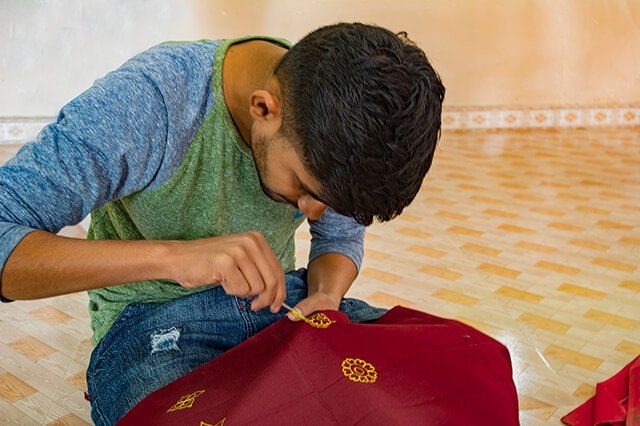
Rogan Art Nirona Village
Resembling the characteristics of embroidery, Rogan art is when you paint on fabric using a thick brightly coloured castor seed oil (castor is commonly grown in the Kutch region of Gujarat).
To prepare the paint, castor oil is heated for more than 12 hours until it catches fire. It is then mixed with cold water and vibrant color to give a thick residue called Rogan.
The artist then uses a six-inch thick metal needle to paint with a fine thread of Rogan on a piece of cloth. Even the simplest design takes days to complete.
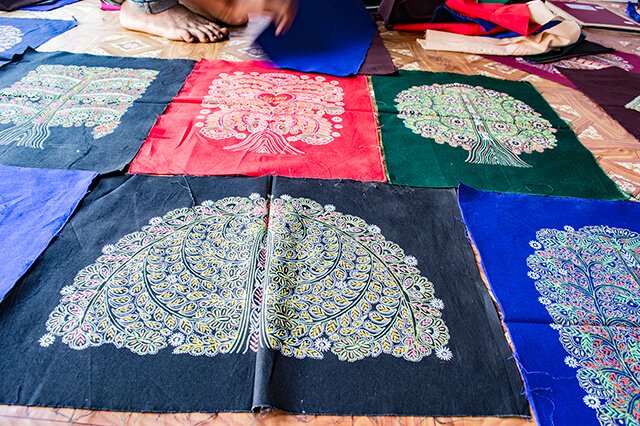
The Khatri family, in Nirona village, gives you a free demo, before showcasing a variety of different Rogan fabrics, should you wish to make a purchase.
Simply walk in or call them in advance to book an appointment, the Khatri family welcomes all.
Copper Bell Art, Nirona Kutch
Next on the list of local art forms in Kuch was The Luhars of Nirona and their popular Copper Bell art.
Preserving it for the last 10 or so generations, many families in Nirona get their livelihood totally out of this art.
Copper Bell art has mainly originated from Sindh, and even today many villages around the border area between India and Pakistan make it.
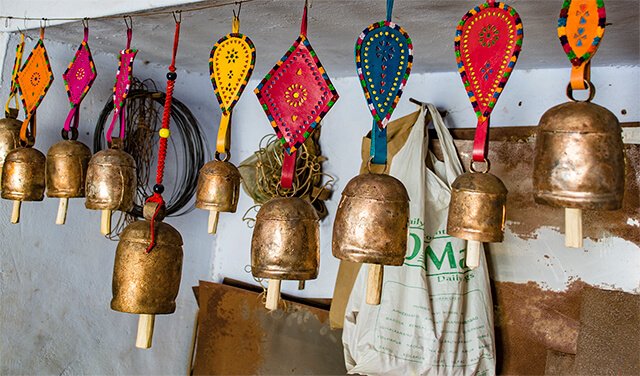
Just like the Khatri family of Rogan art, if you visit any Copper Bell artist in Nirona, he will show you how it is done.
I ended up at Lohar Haji Saddiq’s shop in Nirona and was given a small demo of making a bell from scratch right in front of my eyes. The ease and finesse with which his hammer moved created a musical masterpiece that uses no welding joints but a unique interlocking system was impressive.
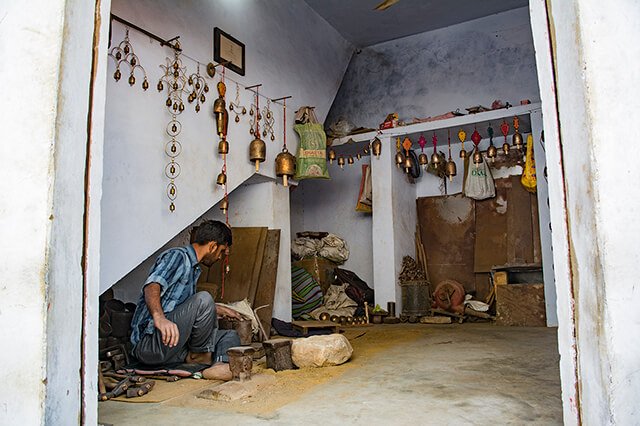
Once done with Copper Bell, I moved to familiarize myself with the art of Lacquer.
Lacquer Art, Nirona Village
Practised by a semi-nomadic tribe called Wada, in the Banni area in and around the villages of Nirona and Bhirandiayara, Lacquer art turned out to be yet another distinction.
I was told that the art and the tribe practising it are the original migrants from beyond Sindh, before partition.
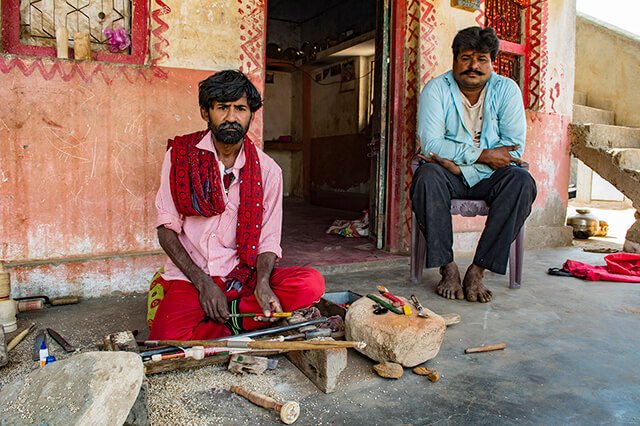
Obtained from the sap of the Rhus Tree which changes colour from white to brown upon exposure to air, Lacquer is a simple reflection of Zigzag patterns creating waves of colors mixing and adorning simplest of the products like wooden spoons, bread rolling pins, containers, toys, utensils, etc.
If the lacquer work starts to lose its sheen, just apply some oil to it and it will look as new.
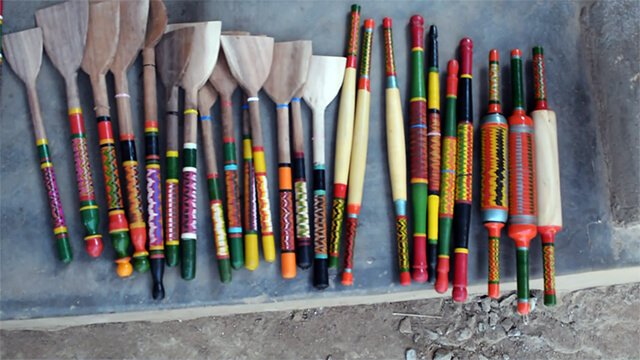
It’s a shame that visiting the local villages of Kutchi art isn’t on most people’s travel lists when visiting Kutch, but I recommend it. I mean the experience of shopping local art after seeing how it was done with all the effort and dedication put behind it simply takes the shopping experience to the next level. It moreover helps local people sustain and continue preparing such legacy art forms.
Update: I just found out that a few online retailers are selling the same-sized copper bell that I bought from Nirona, at a whopping 650 Rupees. Whereas the amount I paid in Nirona was only 150 Rupees.
If you are interested in exploring places other than Nirona Kutch village and the indigenous art forms, check my Kutch travel blog where I have included more tips on what to see and do around Nirona Village. Unlike most people who visit Kutch Rann Utsav, I don’t recommend it. Also read this Gujarat travel guide, if you are visiting more than just the region of Kutch.
If you have a question or would like to connect, please find me on Instagram. You can also follow my YouTube channel for video updates.
